Original author: Filecoin Network
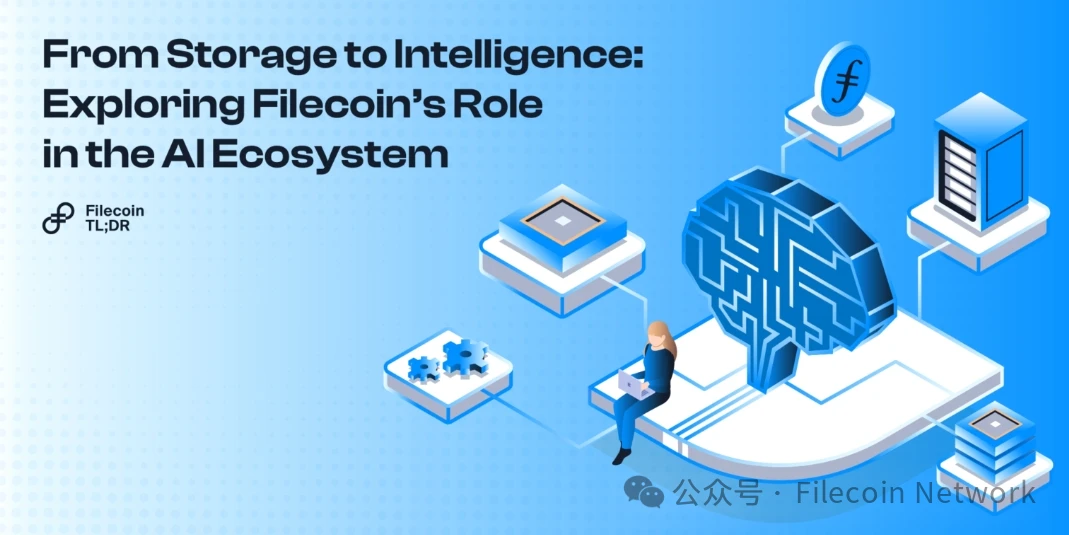
At first, the fusion of artificial intelligence (AI) and blockchain seemed like an awkward buzzword combination, often met with skepticism by early adopters. But in just one year, decentralized AI has grown from a vague concept to the core of the conversation in the Web3 environment. This rapid transformation is attributed to three key factors:
AI Impact: AI will significantly impact the way we interact with the world. As AI agents become more sophisticated, they will manage tasks such as financial trading and personal tutoring. This evolution raises important questions about control and governance in AI development.
Centralization Risk: Centralized AI models controlled by a few tech giants pose serious risks, including bias, censorship, and data privacy issues. This concentration of power stifles innovation and creates vulnerabilities, as evidenced by the recent Hugging Face, security breach incident.
The need for an inclusive AI ecosystem: Decentralized AI provides a path to a fairer and more accessible AI landscape by distributing computing processes across various systems. The main advantages include: lower costs, lower barriers to entry enable small developers and startups to innovate in the field of AI; enhanced data integrity, verifiable data sources increase transparency and trust in AI models; democratic environment, combining AI development with market demand to create a more democratic technology environment.
These insights highlight the value of alternative approaches to centralized AI.
Decentralized AI Pillars
Decentralized AI consists of three pillars: utilizing users’ idle computing power, utilizing secure decentralized storage, and implementing transparent data labeling.
Decentralized Storage: Leverage decentralized storage networks such as Filecoin to ensure secure and verifiable storage of large datasets.
Decentralized computing: By leveraging the idle computing power of individual users and distributing tasks across the network, decentralized AI makes AI development easier to implement and more cost-effective.
Decentralized Data Labeling and Verification: A transparent and verifiable data labeling process helps ensure data quality, reduce bias, and increase trust in AI systems.
In-depth understanding: Decentralized AI projects in the Filecoin ecosystem
To gain a deeper understanding of how the Web3 stack can benefit the AI space, we will explore the various approaches taken by four decentralized AI projects that are leveraging some or all of the above-mentioned pillars of decentralized AI.
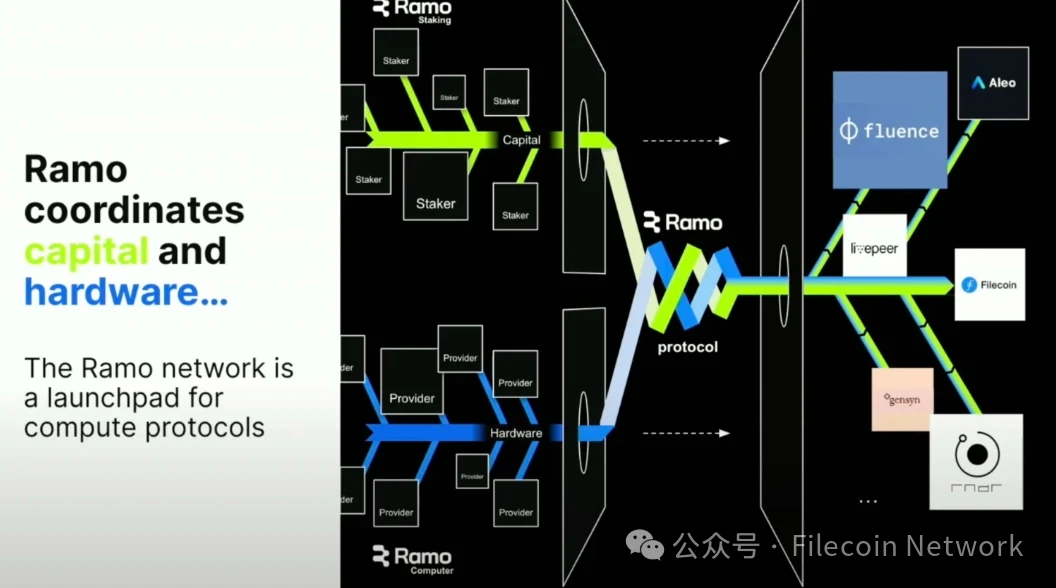
Source: Unlocking decentralized storage for AI workloads and beyond - Vukasin Vukoje
(https://www.youtube.com/watch? v=tJ 1 RfAL-aWY)
Ramo - Simplifying participation in decentralized networks (Funding stage: Seed round)
Ramo plays a vital role in driving AI workloads by coordinating capital and hardware. By combining resources from different providers, Ramo facilitates the execution of complex tasks such as storage, SNARK generation, and computation, while allowing for the joint funding of hardware resources across multiple networks.
Multi-network tasks : Ramo supports tasks across multiple networks (e.g. reading from Filecoin, processing on Fluence, and writing back to Filecoin), helping to maximize revenue for hardware providers and reduce coordination complexity.
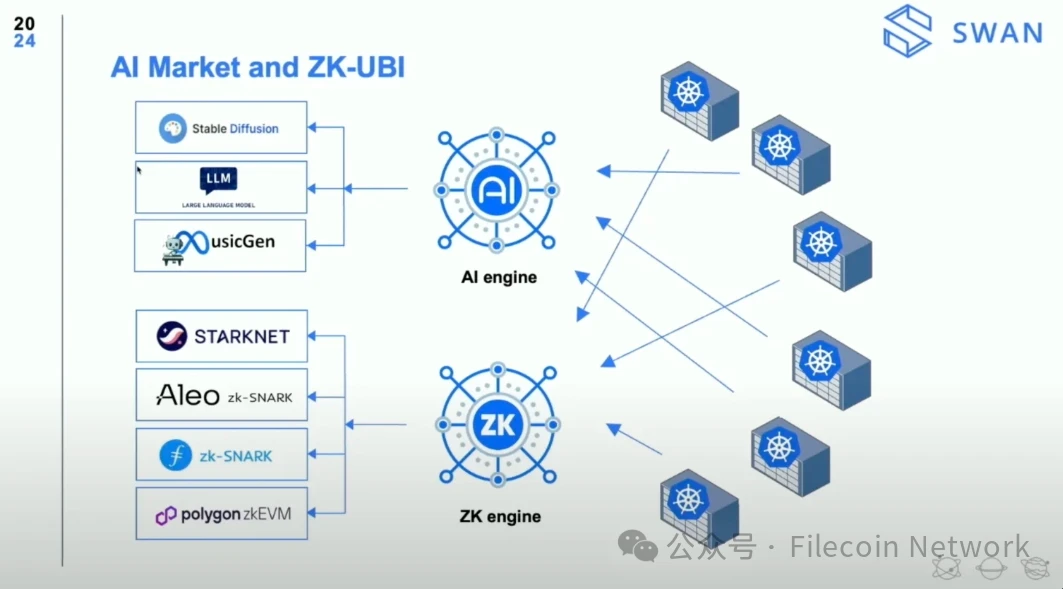
Source: Decentralized Business Intelligence with Swanchain AI Agents - Charles Cao (https://www.youtube.com/watch?v=Mtl-paq2 jEk)
Swanchain - Decentralized AI training and deployment (Funding stage: Seed round)
Swanchain is a decentralized computing network that connects users with idle computing resources for AI tasks such as model training. Filecoin, as its primary storage layer, ensures secure, transparent, and accessible storage of AI data, in line with the principles of decentralized AI.
Decentralized computing market: Swanchain aggregates global computing resources and provides a cost-effective alternative to centralized cloud services. Users can bid for computing tasks, and Swanchain will match them with suitable providers based on their needs.
Secure data storage through Filecoin integration: Swanchain uses Filecoin and IPFS to securely store AI models and output results, ensuring transparency and accountability in the AI development process.
Support for multiple AI workloads: Swanchain supports a variety of AI tasks including model training, inference, and rendering, such as large language models and image/music generation.
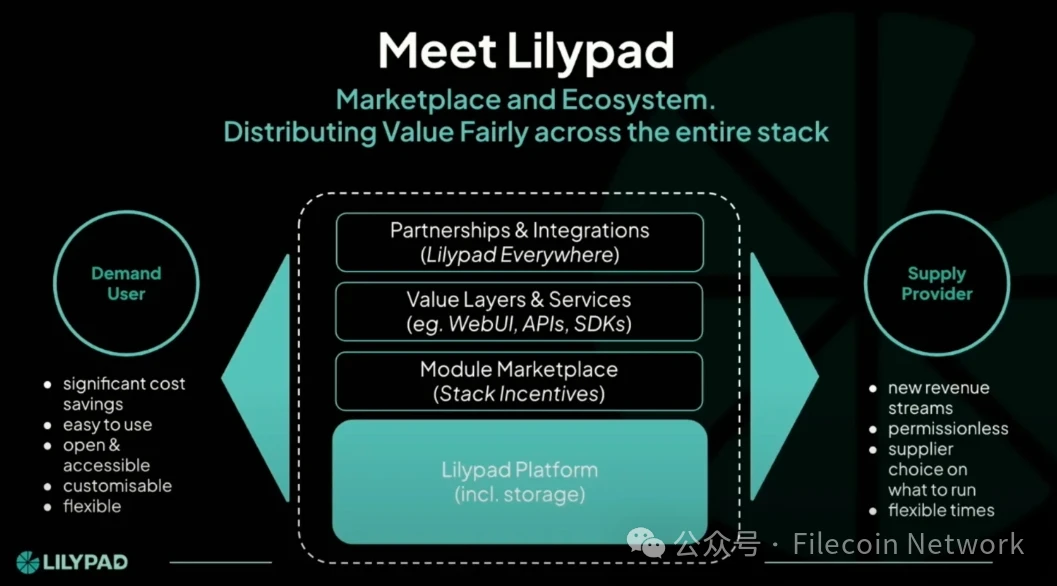
Source: The Role of Open, Verifiable Systems in AI (Filecoin and Lilypad) - Ally Haire (https://youtu.be/8WzMOsgzDjA)
Lilypad - Distributed AI Computing (Funding Stage: Seed Round)
Lilypad aims to create a trustless distributed computing network, free up idle processing power, and create a new market for artificial intelligence, machine learning, and other large-scale computing. By integrating Filecoin and leveraging IPFS for hot storage, Lilypad is able to ensure secure, transparent, and verifiable data processing throughout the AI workflow, supporting an open and responsible AI development environment.
Task-based computing matching: Lilypad matches user-defined computing requirements (such as GPU types and resources) with providers based on a task model, creating a marketplace for developers to share and monetize AI models in a decentralized AI ecosystem.
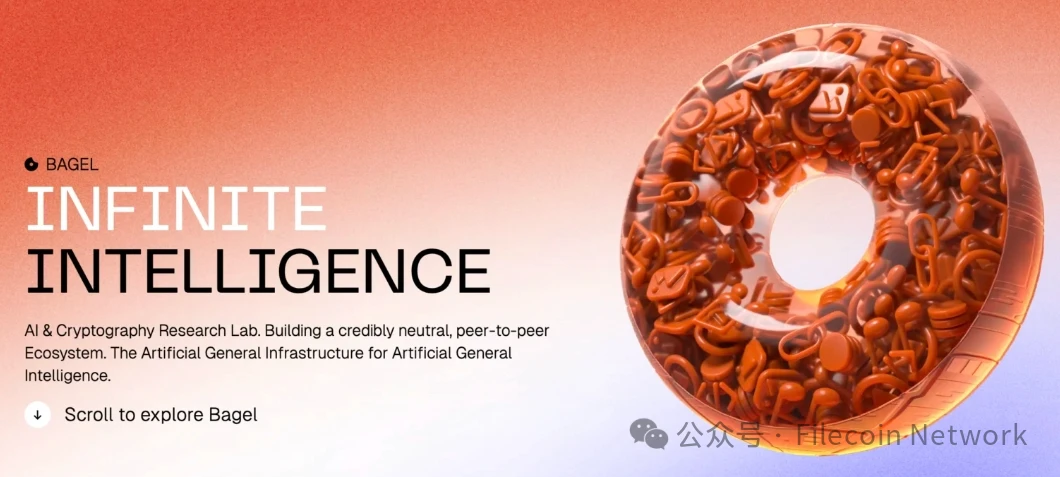
Source: bagel.net (https://www.bagel.net/)
Bagel - AI and Cryptography Research Lab (Funding Stage: Early Seed Round)
Bagel is an AI and cryptography research lab that has created a decentralized machine learning ecosystem that enables AI developers to train and store models using the computing and storage capabilities of decentralized networks such as Filecoin. Its innovative GPU reconstruction technology enables storage providers (SPs) to contribute to both storage and computing networks, thereby enhancing the practicality of Filecoin for AI applications, expanding support for AI developers, and creating new revenue opportunities for SPs.
Increase Filecoin storage provider revenue: Bagel helps storage providers monetize storage and computing resources, increasing their revenue and incentivizing more network participation.
Optimizing compute utilization: Through dynamic routing, Bagel directs GPUs to profitable networks, maximizing efficiency and returns for providers and users.
Overview
The combination of Filecoin and AI marks an important step forward in technological development. By combining verifiable storage with a computing network, we can not only solve current challenges, but also pave the way for future innovations. As these technologies continue to develop, they will have a profound impact on AI and other fields, providing new possibilities for businesses and developers.
If you want to learn more about Ramo, Swanchain, Lilypad or Bagel, please click on the following links to view the relevant keynote speeches:
Unlocking decentralized storage for AI workloads and beyond - Vukasin Vukoje
Decentralized Business Intelligence with Swanchain’s AI Agents - Charles Cao
The Role of Open, Verifiable Systems in AI (Filecoin and Lilypad) - Ally Haire
Bagel and Filecoin Foundation Collaborate to Support Decentralized AI Development
If you want to know the latest situation of Filecoin ecosystem, please follow @Filecointldr or join our Discord .
Many thanks to HQ Han and Jonathan Victor for their review and valuable comments on this article.










